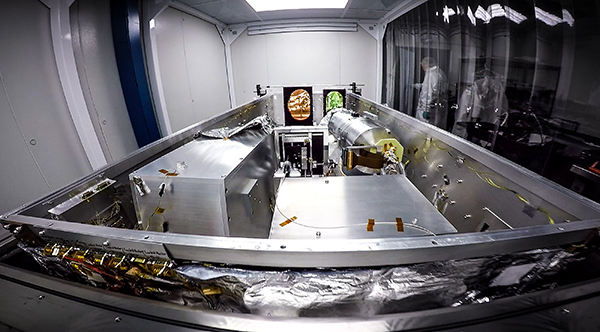The UT Department of Astronomy recently became equipped to help researchers find planets that humans can explore next through a new device.
The McDonald Observatory activated the device, called the Habitable Zone Planet Finder, last month in the Hobby-Eberly Telescope. The device is a spectrograph, which uses infrared light radiation to detect low-mass stars near Earth-like planets that might be able to support life, astronomy research professor William Cochran said.
“These stars, being low-mass, (are) fairly cool, so their output peaks more towards the infrared of the spectrum,” Cochran said. “We’re not trying to detect the planet directly, but we’re trying to measure the influence it has on its parent star.”
These low-mass stars are often close to Earth, which makes them good candidates for detecting planets with liquid water, said Cochran, who served as a scientific advisor on the spectrograph’s construction.
Taft Armandroff, director of the McDonald Observatory, said the planet finder is about the size of a small car and must be housed in a large facility. The Hobby-Eberly Telescope, one of the world’s largest telescopes, was ultimately chosen to house the device.
“We break up the light really finely in order to get these precise measurements,” Armandroff said. “This telescope is ten meters in diameter, so it’s a great opportunity to attach one of the world’s highest-performing telescopes to one of the most sophisticated instruments.”
Of the telescopes in its class, Hobby-Eberly is one of only four located in the United States. It is part of a collaborative project between UT, Penn State and two German universities.
Armandroff said introducing the spectrograph in this collaboration indicates a move toward research on exoplanets across the field of astronomy.
“When I was in graduate school, no one was studying (exoplanets),” Armandroff said. “Now, a lot of our incoming graduate students and undergraduates are fascinated by planets.”
Astronomy and physics junior Zoe de Beurs said finding more planets similar to Earth made her excited about her work in exoplanet detection.
“You’re kind of pushing the boundaries of what’s known and what’s not,” de Beurs said. “As an undergraduate researcher, that’s kind of a unique opportunity.”
Armandroff hopes UT’s program will help to push these boundaries with more new telescopes on the horizon.
“We’re going to see more work in the infrared and more attention to Earth-like planets around low-mass stars,” Armandroff said. “We want to be a leader in this at UT.”





















